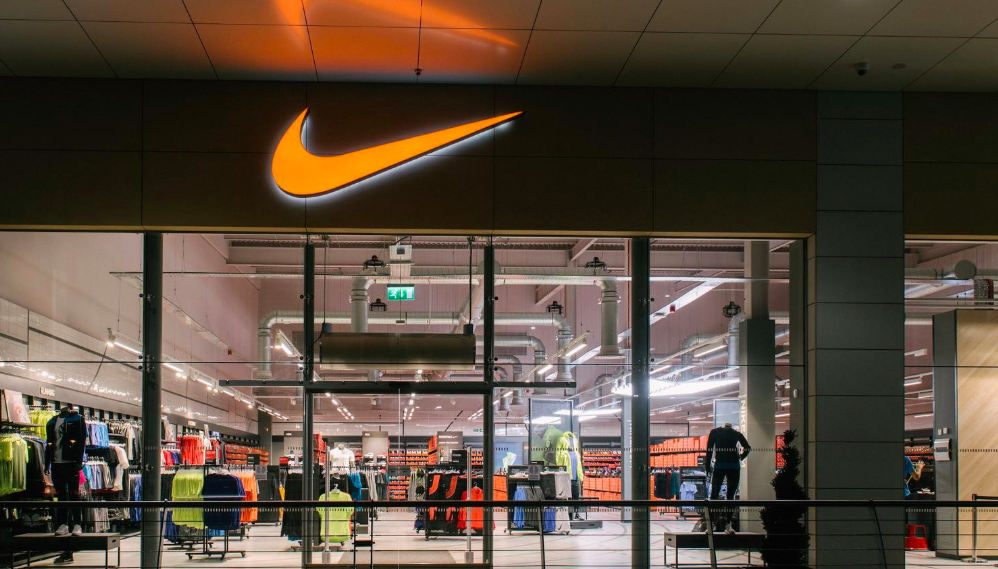Studies arrived last week showing Nike ranked highest among active lifestyle brands, but lost ground on Brand Finance’s annual ranking of the most valuable American brands. Studies also rated the digital expertise of department stores, the relevance of social activism for brands with teens, robust urban population growth and apparel’s expansion online.
Nike Lands at 21 on Brand Finance US 500
Nike ranked at 21 on Brand Finance’s annual report on the world’s most valuable American brands with a brand value of $28.0 billion. That’s down from a ranking in 2017 of 16 on a brand value of $31.8 billion. Among other brands in the active lifestyle space, Under Armour was ranked at s116191 against 108 in 2017; North Face, 229 against 196; Foot Locker, 360 versus 363; Dick’s Sporting Goods, 313 against 278; Timberland, 434 versus 411 and Converse, 474 against 430. Among broadline retailers, Amazon led the list after finishing at 3 for 2017. Wal-Mart ranked at 8 against 7; Target, 48 against 37; Costco, 53 against 49; Nordstrom, 168 against 145; Kohl’s, 172 against 141; Macy’s, 144 against 123; T.J. Maxx, 116 against the same 116; Old Navy, 300 against 292 and J.C. Penney, 389 against 321.
Macy’s Earns Digital Genius Status
Macy’s ranked first among department stores in the sixth annual Gartner L2 Digital IQ Index. The study ranks brands by their website performance, digital marketing, social media and mobile. Macy’s was the only department store to achieve Genius status with a score of 140. Retailers achieving Gifted status (score between 110 and 139) were Nordstrom, Asos, Marks & Spencer and John Lewis. Among other American chains ranking higher up on the list, JCPenney earned a score of 122; Kohl’s and Sears, both 119; Bloomingdale’s, 117; Zappos, 115; DSW, 113 and Neiman Marcus, 112.
Gartner L2 Digital IQ Index – Department Stores 2018
Teens Favor Cause Marketing
Sixty-seven percent of teens were more likely to purchase from a company that supports a cause versus a company that does not according to a survey of 2,000 U.S. teens between the ages of 14-17 from Fuse. More than a quarter have “attended protests or rallies” or “boycotted a company” in the last year. In that same period, teens cited taking the following actions: 60 percent recycled regularly, 42 percent educated family and/or friends about a cause, 33 percent volunteered their time to a cause and 22 percent donated money to a cause.
Teens’ Views on Social Activism and Cause Marketing and Why it Matters for Brands: A Study from Fuse
Urban Population Growth Pacing Suburban Growth
According a report released by the Urban Land Institute (ULI) and RCLCO real estate advisers, between 2010 and 2015, the population in urban neighborhoods increased 3.4 percent, compared to 3.7 percent in the suburbs. This contrasts sharply to the period from 2000 to 2015 when urban population grew just 1 percent versus 13 percent in suburbs. Almost one-third of urban households are headed by person under 35 compared to only 17 percent of households in the suburbs.
The New Geography of Urban Neighborhoods
Twenty-Seven Percent of Apparel Sales are Now Online
According to the Internet Retailer 2018 Top 1000, online apparel sales accounted for 27.4 percent of overall U.S. apparel sales in 2017. That’s up from 23.5 percent in 2016 and 20.7 percent in 2015.
E-commerce is Transforming the Apparel Business and Gaining Market Share in the Process
Photo courtesy Nike
















